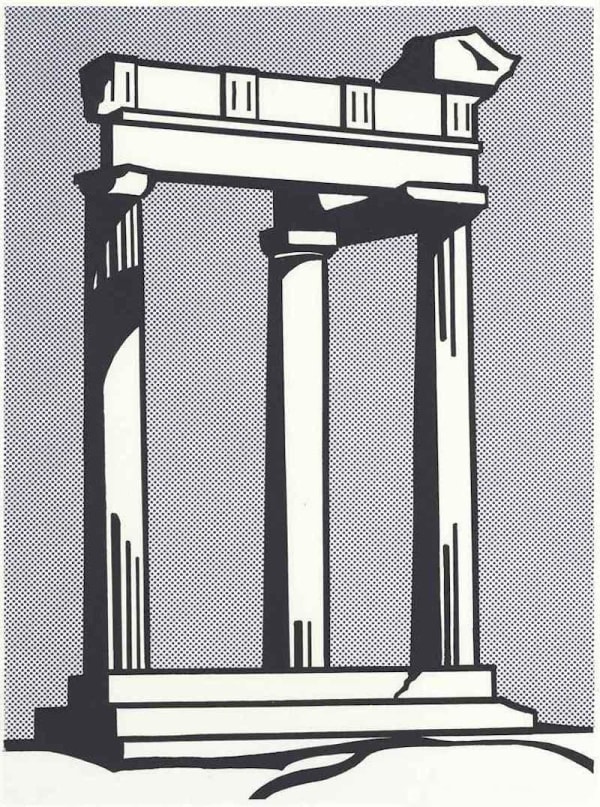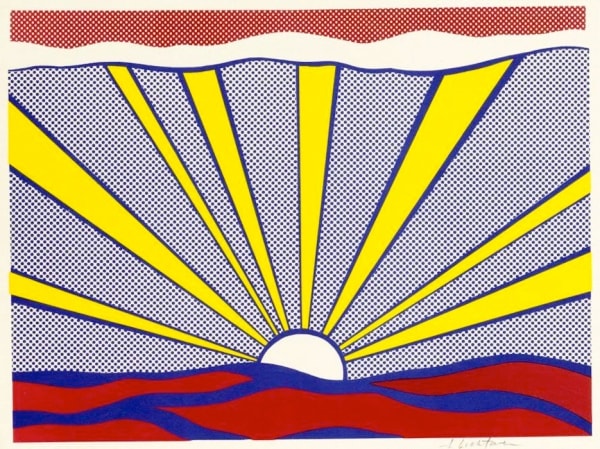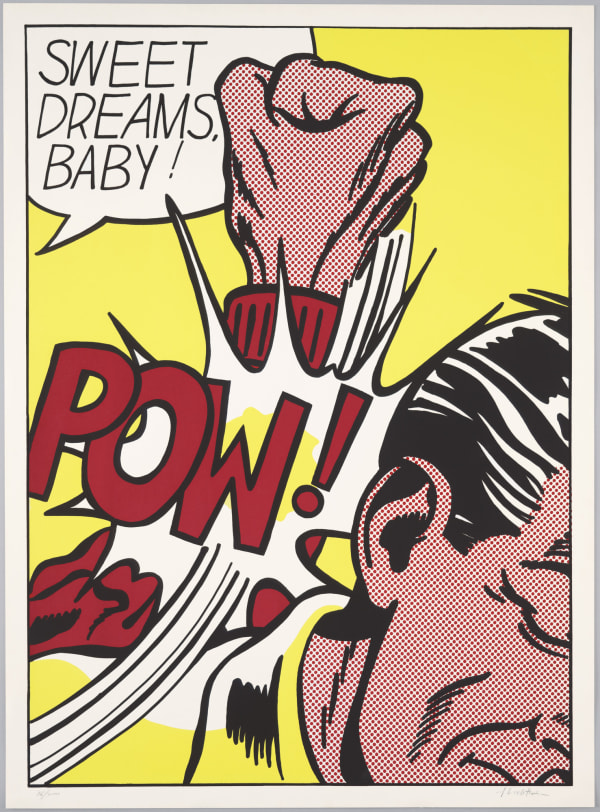
Roy Lichtenstein
40.6 x 50.8 cm
Roy Lichtenstein's Foot and Hand print is a captivating example of the artist's iconic pop art style and his fascination with deconstructing and reimagining the human form. Created in 1964, this artwork is part of Lichtenstein's larger body of work that appropriates imagery from comic books and popular culture to create bold and visually striking compositions.
At first glance, Foot and Hand appears to be a straightforward depiction of body parts, rendered in Lichtenstein's signature style with bold lines, primary colors, and Ben-Day dots. However, upon closer inspection, it becomes clear that Lichtenstein has transformed these familiar subjects into something altogether unexpected and intriguing.
What sets Foot and Hand apart is Lichtenstein's playful manipulation of scale and perspective, as well as his clever use of abstraction and distortion. The oversized hand and foot take on a surreal quality, hovering in space against a stark white background, while the exaggerated details and bold outlines give the impression of two-dimensional comic book characters brought to life.
Moreover, Foot and Hand can be seen as a commentary on the nature of representation and perception. By isolating and magnifying these isolated body parts, Lichtenstein challenges viewers to reconsider their understanding of the human form and its role in art and visual culture. The disjunction between the familiar and the unfamiliar, the realistic and the abstract, invites viewers to engage with the artwork on multiple levels, sparking questions about identity, representation, and the limits of artistic expression.
In addition to its conceptual depth, Foot and Hand is visually striking and aesthetically compelling. The bold colors, dynamic composition, and graphic style create a sense of visual tension and excitement, drawing the viewer's eye across the composition and inviting them to explore the nuances of the image.
Overall, Roy Lichtenstein's Foot and Hand print is a masterful example of his ability to transform everyday subjects into iconic works of art. Through his innovative approach to composition, color, and form, Lichtenstein invites viewers to reconsider their understanding of the human body and its representation in the visual arts, while also celebrating the enduring power of pop art to captivate and inspire.
-
 Roy LichtensteinNew Seascape (C. 42), 1966
Roy LichtensteinNew Seascape (C. 42), 1966 -
 Roy LichtensteinMoonscape C. 37, 1965
Roy LichtensteinMoonscape C. 37, 1965 -
 Roy LichtensteinTemple (C. II 3) , 1964
Roy LichtensteinTemple (C. II 3) , 1964 -
 Roy LichtensteinCrak! C. II 2, 1963
Roy LichtensteinCrak! C. II 2, 1963 -
 Roy LichtensteinRed Barn (C.89), 1969
Roy LichtensteinRed Barn (C.89), 1969 -
 Roy LichtensteinCrying Girl (C. II 1), 1963
Roy LichtensteinCrying Girl (C. II 1), 1963 -
 Roy LichtensteinSunrise (C. II 7), 1965
Roy LichtensteinSunrise (C. II 7), 1965 -
 Roy LichtensteinShipboard Girl (C. II 6), 1965
Roy LichtensteinShipboard Girl (C. II 6), 1965 -
 Roy LichtensteinSweet Dreams Baby (C.39), 1965
Roy LichtensteinSweet Dreams Baby (C.39), 1965 -
 Roy LichtensteinReverie (C. 38), 1965
Roy LichtensteinReverie (C. 38), 1965
Join our mailing list
* denotes required fields
We will process the personal data you have supplied in accordance with our privacy policy (available on request). You can unsubscribe or change your preferences at any time by clicking the link in our emails.
This website uses cookies
This site uses cookies to help make it more useful to you. Find out more about cookies.









